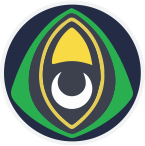Computing

“Everybody should learn to program a computer, because it teaches you how to think.”
Steve Jobs, American businessman
Intent:
At Bedfont Primary School, we understand that our pupils already have a wide variety and range of digital experiences through their everyday life and experiences. We see it as our mission to prepare our children for society and future job roles that are yet to have even been imagined. Our computing curriculum aims to create responsible, competent, confident and creative users of technology. We support children develop their computational thinking by working analytically to solve problems and explore both natural and artificial systems. Children use logical thinking to understand, develop and create algorithms across our curriculum.
Implementation:
At Bedfont Primary, computing is taught using a blocked curriculum approach. This ensures that children are able to develop depth in their knowledge and skills over the duration of each of their computing strands. Sessions for revisiting and recapping key learning are planned into the half term to deepen understanding and reinforce knowledge. ‘Teach Computing’ is used in Bedfont Primary School from Year 1 to Year 6, this scheme was chosen as it has been created by subject experts and is based on the latest pedagogical research. It provides a spiral curriculum, this means that each of the themes is revisited regularly (at least once in each year group), and pupils revisit each theme through a new unit that consolidates and builds on prior learning within that theme.
The curriculum aims to equip young people with the knowledge, skills and understanding they need to thrive in the digital world of today and the future. The curriculum can be broken down into 3 strands: computer science, information technology and digital literacy, with the aims of the curriculum reflecting this distinction.
The national curriculum for computing aims to ensure all pupils:
•Can understand and apply the fundamental principles and concepts of computer science, including abstraction, logic, algorithms and data representation (Computer science)
•Can analyse problems in computational terms, and have repeated practical experience of writing computer programs in order to solve such problems (Computer science)
•Can evaluate and apply information technology, including new or unfamiliar technologies, analytically to solve problems (Information technology)
•Are responsible, competent, confident and creative users of information and communication technology (Digital literacy)
EYFS use ‘Barefoot Computing’ and also use technology in the classroom, this resource is based around computational thinking concepts and approaches, which teaches pupils the necessary problem-solving skills needed for everyday life.
Online safety is taught through assemblies, Computing lessons, PSHE, newsletters home and our website offers lots of support for parents and pupils to ensure that children’s online safety is paramount in and outside of school. All children sign our ‘Acceptable Use Policy’ and agree to be safe online both inside and out of school.

